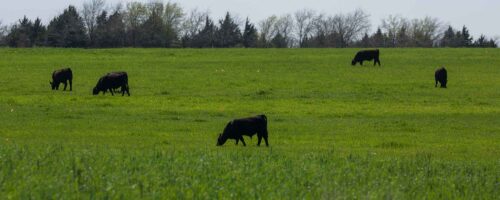Early Farming Practices versus Modern Agriculture
James Locke provides a historical perspective on the impact of agriculture practices on the environment and how modern agriculture is able to do more with less.
Were the farming practices of the early and mid-1900s more eco-friendly than modern agriculture?
In some ways “yes,” and in other ways “no.”

On the one hand, agricultural producers in the early and mid-1900s used fewer synthetic fertilizers and pesticides. They utilized more green manure crops (which we call cover crops today) to provide nitrogen fixation and weed suppression, which provided greater plant diversity. Most operations were diversified to include an animal component to provide meat, milk and eggs.
On the other hand, while fewer pesticides were used, those pesticides were not well tested or regulated. They were often very toxic, and most are now off the market.
Perhaps the most significant difference is the lack of conservation tillage used. In that era, it was widely believed that clean tillage was the only way to farm. The resulting bare soil and destruction of soil structure allowed significant soil erosion.
Also, little crop rotation was practiced. Farmers typically planted a primary cash crop on the same ground year after year, often without replacing the nutrients removed. These practices greatly exacerbated the effects of drought in the 1930s and made the Dust Bowl much worse.
Since the early and mid-1900s, agricultural research has yielded many innovations that have improved crop yields and mitigated impacts on the environment. We use more pesticides today, but these pesticides are extensively tested before release and must be approved by both the U.S. Environmental Protection Agency and state departments of agriculture. Most farmers now follow Integrated Pest Management principles, which consider economic thresholds and biological or cultural options in addition to pesticides.
We use more synthetic fertilizers and have more concentrated use of animal manures today, but we have improved our efficiency by following the “4R” approach of using the “right place, right rate, right source and right time” for nutrient inputs. Many farmers are working to improve soil health and reduce erosion potential by implementing reduced or no-tillage farming practices, adding cover crops, and increasing crop rotation.
Finally, protecting pollinator health has become a new focus for production agriculture. While these efforts have paid dividends, there is still room for improvement. Nutrient runoff into water bodies, erosion, pesticide resistance and off-target drift remain as areas for improvement.
According to the 1920 Census of Agriculture, there were more than 6.4 million farms using 503 million acres to provide food and fiber for about 106 million Americans, plus exports.
In comparison, today’s modern agriculture has become more efficient at producing food and fiber. As of the 2012 Census of Agriculture, there are 2.1 million farms using almost 390 million acres to provide food and fiber for 313 million Americans, plus exports. This is a 73.82 percent reduction in land use per person.
While modern agriculture must always continue to find new methods for improvement, the progress we have made in the face of ever-diminishing land, labor and water resources benefits both mankind and the environment.



Comment